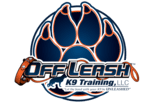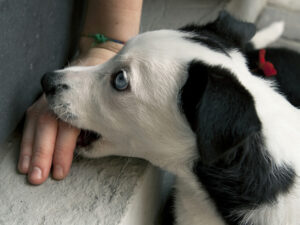What Is Bite Inhibition and Why Is It Important?
Canines have one main defense system, their teeth. Each puppy can bite and it can be painful. On the off chance that they are terrified enough, or a “perfect storm” is created, your dog may bite. That doesn’t in any capacity make him a “terrible” dog. It makes him a canine. It’s your obligation, to show your puppy that people are delicate. When you teach your dog bite inhibition as a pup, that preparation you gave your dog will persist regardless of the fact that he’s years older and may be put in a position where he feels compelled to bite.
In my blog on “my dog unexpectedly bit someone,” I discuss why bite inhibition is important and give a scenario where, “I cannot believe it, he’s never bitten previously.” Keeping in mind that “If that specific series of events do not happen again (or something similar), he most likely never will bite again.” This is why teaching bite inhibition at a young age is very important! Even in worst case scenario, your pup will still show restraint.
There are really four stages in prepping your pup (6-10 weeks) for bite inhibition. The initial two include diminishing the force in the bite; the second two stages include diminishing the recurrence of the bite. The preparation must be carried out in a specific order. On the off chance that you attempt to lessening the recurrence to begin with, the canine won’t figure out how to weaken his bite.
Bite inhibition mainly works by teaching the dog through normal play and interaction, this sort of “training” should immediately start throughout your spontaneous play sessions with your puppy and proceed in more organized play sessions as he develops.
Eliminate Painful Bites: Ninety percent of puppies will quit mouthing in mid-nibble in the event that you give a shrill-squeal or howl. At that point you should praise and continue the play session. The other ten percent are your puppies who are exhausted or over-excited and they will raise their behavior as opposed to halting it. If this happens, you should move the pup to a different area, isolate it, and end the play session. That is literally all you have to do. You do not need to shout, “pop” the puppy on the nose, pushing your hand down his throat, etc.
Eliminating the Pressure of the Bite: Slowly and gradually you want to shape the pup to decrease the pressure of the bite. Set a limiting point of how hard the puppy can bite throughout play and training sessions. On the off chance that he bites harder, howl. Bit by bit set your “pain threshold” lower and lower so he develops softer and softer bites. Move at a pace that guarantees that the pup will be successful. An enormous leap in your expectations is generally very confusing for a pup and they will not get the concept that you are trying to teach them. So, it should be a “gradual” decrease in pressure.
Start To Control The Play Sessions: This is when you are teaching the dog to “stop” playing when you are done playing, to take things, and to “out” things on command. At our dog training facility in Northern Virginia, we teach our owners to “end the session” we use the word “off.” Which essentially teaches the pup, “stop doing what you are doing.”
You May Never Mouth Unless Invited To: Finally, we teach the pup that you are not allowed to mouth under any circumstance unless specifically engaged in a play session.
In spite of the fact that bite inhibition is a crucial lesson to teach your pup, doesn’t mean I am telling you that you need to endure constant puppy mouthing. Puppy teeth are sharp and definitely do not feel good!
Ideally, you want to deal with bite inhibition when your pup is quiet/calm and you have the time and the room to sit down and play delicately with your pup. On the off chance that the pup bites excessively hard, howl. If this works and he backs off, reinforce with calm physical praise and up-beat verbal praise. On the off chance that he gets excessively energized and bites harder, end the game quickly (as stated above).
To end the training session, you must have the capacity to leave the puppy so the engagement cannot continue, remember, even bad attention is still better than no attention to some pups. It’s useful to have the puppy leashed (we call this “back tied”), so you can essentially move out of his range without him being able to follow you once you end the game. If not possible, you can end the game and isolate him for a short period of time if he was biting too hard, as well.
Another option if the puppy remains engaged in unwanted behavior is to “redirect” him to a chew toy, tug, or something that he CAN play with. We call this “redirecting.” You are saying, “You cannot continue with this, but we CAN play with this.” If your are just telling your pup, “No” on everything he does, he is not learning what he CAN play with. Imagine if you are annoying your parents, but every time you try to do something else, your mother or father says, “No, don’t touch that” “No, not that either,” “Nope, cannot play with that either.” You will think, “Well, what CAN I play with to keep me occupied.” So, show your pup what they CAN do or play with. This is as important as teaching them what they cannot do.
Puppy biting our mouthing never requires much more than time outs or withdrawal from play. Teach them how to play, how to end play, how much pressure to use, and what they can play with other than you (redirection).
Another consideration all owners should make is that some breeds are more prone to being very mouthy due to it being in their genetic nature.
For example, if you have a: Belgian Malinois, German Shepherd, Australian Shepherd, Cattle Dog (etc), you probably have experienced the mouthiness and “nipping” of these breeds when they were pups. This is because they are what we refer to as, “herding dogs;” therefore, it’s kind of in their genetic make-up to have these issues. This is why it’s important to teach them bite inhibition while they are small pups.
If you stick to these rules, you should have a pup showing great bite inhibition in a very short amount of time.
I would highly recommend reading my blog on “The Levels Of a Bite,” so you can see why teaching bite inhibition is VERY important.
-Nick White
Owner/Founder
Off Leash K9 Training

